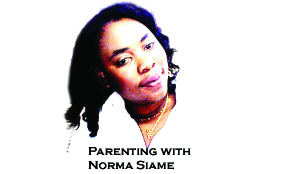 Young children are curious about almost everything, including their bodies.
Young children are curious about almost everything, including their bodies.
Children by nature are also not shy and will ask about anything. Why are some parts of girls’ and boys’ bodies different? Where do babies come from? Is it true that a stork brings babies to mummies and daddies?
Or the local version of the stork story– will mummy go and buy a baby from Shoprite or the hospital?
A close friend has two daughters. One is four and the other two.
The four-year-old is a highly inquisitive child who always wants to know how things work and the reason they are the way they are.
Short of going to peep under the bathroom door while my friend was bathing, she was not surprised when one morning she was ambushed by her daughter who wanted to find out if the mum had the same body parts as her.
After a little girl-to-girl talk and more prying questions, the young girl now wanted to know if her daddy looked like her too.
Further explaining was necessary with the help of a primary school body chart as my friend laboured to point out the differences between males and females.
She was exhausted by the time her daughter felt her questions sufficiently answered.
As it is no secret that I derive pleasure from reading, I came across a book for younger children about their bodies — a resource that parents and teachers can use with ease.
The book, ‘It’s Not The Stork’, helps answer these endless and perfectly normal questions that pre-school and lower primary school children ask about how they were born.
The author has also written two guides for older children which cover the same topics in more depth: It’s So Amazing! for ages six to nine and It’s Perfectly Normal! for ages 10 and up.
‘It’s Not The Stork: A Book About Girls, Boys, Babies, Bodies, Families, and Friends’ by Robie Harris is classic children’s sexuality education book that teaches kids all about where babies come from and how boys’ and girls’ bodies are different.
It features an excited bird and a squeamish bee that explore the topic together.
They ask all the questions that parents aren’t always sure how to answer — everything from “Where do babies come from?” to “How does the baby eat in there?”
The book’s thoughtful, inclusive text and terrific pictures incorporate all sorts of families: whether your family has two parents, one parent, two parents in separate homes (with or without step-parents), adoptive parents, you’ll definitely find a scenario that fits your home environment.
Your kids are also sure to spot children that look like them, since the book depicts children of all races, body types, and ability.
The bird and bee narrators mimic the same reactions kids may have as they learn.
Most importantly, the up-to-date and scientifically accurate information provides a firm foundation for your child’s understanding of anatomy and reproduction.
One of three books in a series targeted at children of different ages, these efforts to be inclusive and the frank information they provide to children about the “facts of life”.
Highly recommended for ages four to eight.
If ‘It’s Not The Stork’ is too basic for your child, Harris has also written two additional volumes that go into more detail for older kids: It’s So Amazing! for ages six to nine and It’s Perfectly Normal! for ages 10 and up.
For comments and contributions email norma.siame@gmail.com






